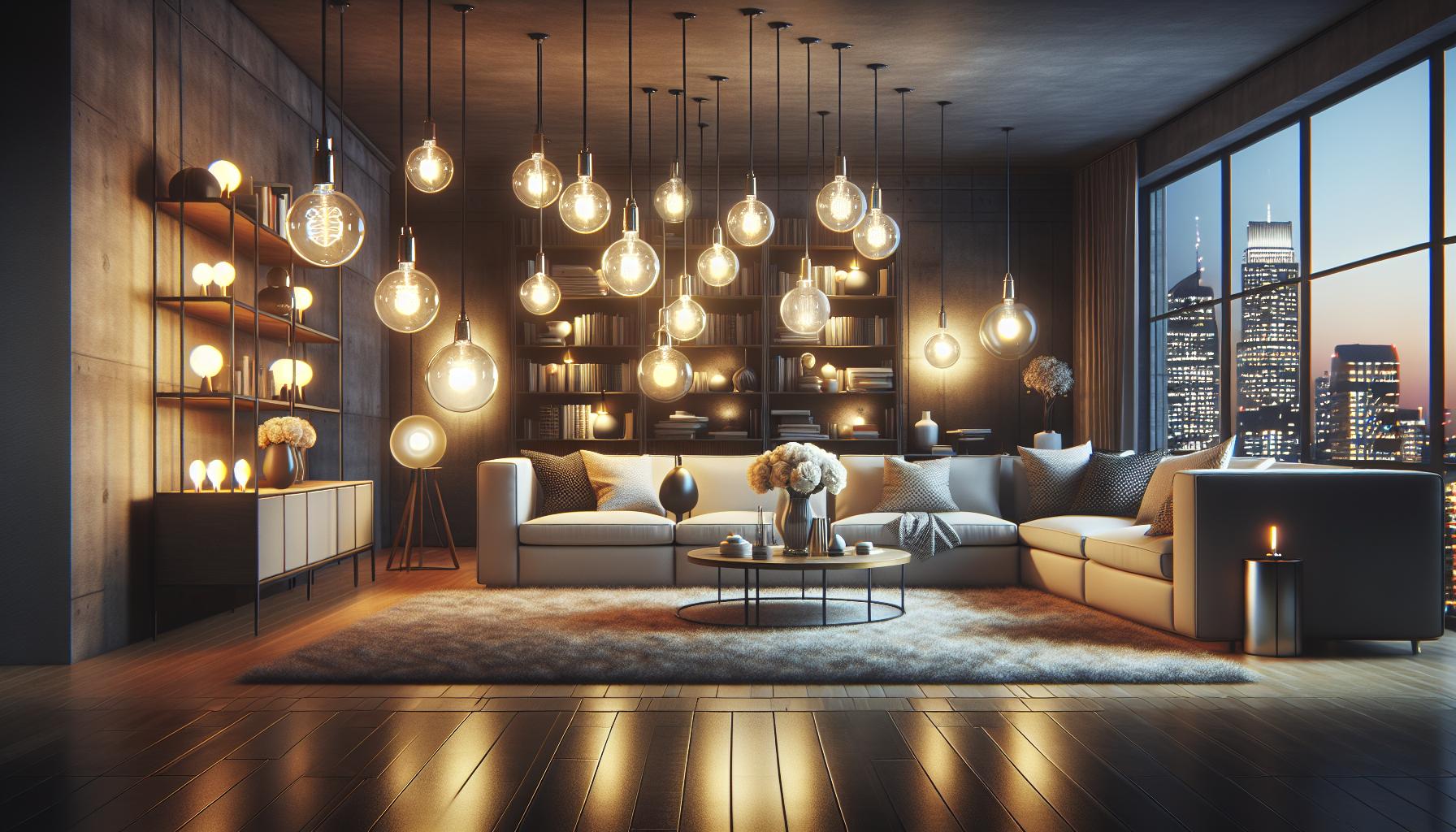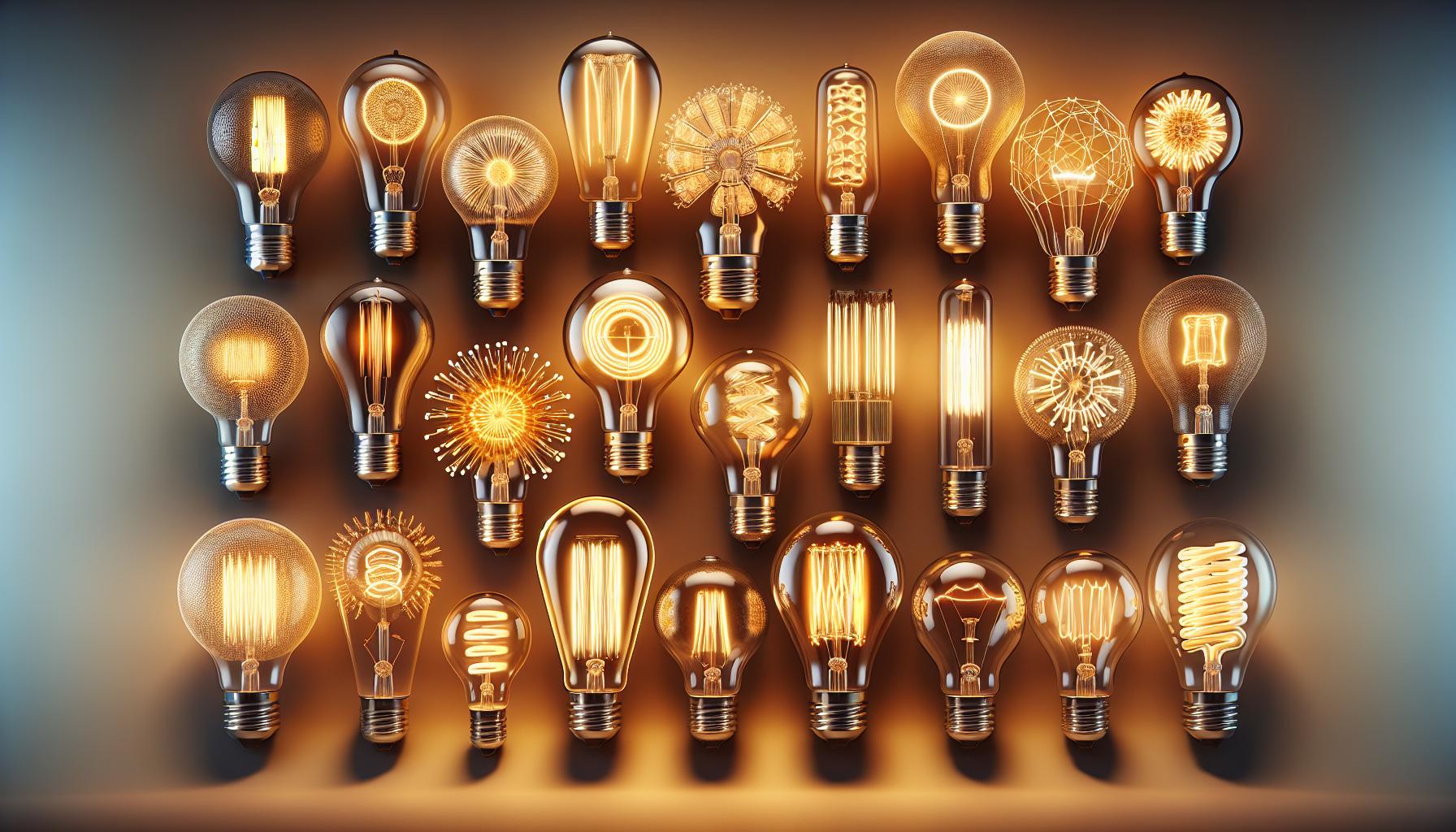Ever wondered what’s going on when you flick a switch and a room lights up? It’s not just about the bulb emitting light; there’s some electrical wizardry at play too. At the heart of it, light bulbs have a secret: they’re not just light sources, they’re also resistors.
You might not think of your everyday light bulb as a component in an electrical circuit, but that’s exactly what it is. Understanding how a bulb functions as a resistor not only sheds light on basic electrical principles but also enhances your grasp of how your household gadgets work. Let’s dive into the illuminating world of light bulbs and resistance, and uncover the role they play in your daily life.
What is a resistor?
Imagine you’re working on your latest home DIY project, and you’re about to add that perfect vintage light bulb to your custom-made lamp. It’s in those moments when a deeper understanding of the components you work with can transform your DIY endeavors. Resistors, for example, are more than meets the eye.
In an electrical circuit, a resistor is like that friend who knows just when to slow things down. Its primary function is to resist the flow of electric current, turning electrical energy into heat while it does so. This not only helps to manage the current flow but also divides the voltage among the various components of the circuit.
Think of a stream of water flowing through a pipe; a resistor is like a narrow section of the pipe that reduces water flow. In electrical terms, this reduction is quantified by a measure known as resistance, and it’s denoted in ohms (Ω). For those magnificent DIY lighting installations, knowing the resistance helps you understand the load capacity and safe operating parameters of your design.
Resistors come in various forms and sizes depending upon their purpose. They could be fixed, offering a constant resistance, or variable, allowing you to adjust the resistance as needed. This might ring a bell because it’s a bit like using a dimmer switch to control your light’s brightness.
Let’s tie this back to light bulbs. Within the bulb, the filament acts as a resistor. Its material, often tungsten for incandescent bulbs, has a specific resistance that controls how much current can traverse through it. What’s fascinating is how this resistance is cleverly utilized to generate light. As electricity runs through the filament, the resistance converts electrical energy into heat, eventually causing the filament to glow and emit light.
When you flip that switch on your next lighting project, you’ll appreciate not just the glow but the subtle interplay of resistance that brings your space to light.
How do light bulbs generate light?
Imagine being cozy at home as the sun sets. You flip the switch and your room is bathed in warm light. But have you ever paused to wonder how that light bulb above your head transforms a silent stream of electricity into the bright, inviting light that allows you to keep reading your favorite book?
Here’s the scoop: light bulbs are fascinating devices that combine simplicity and complexity in their operation. At their core, light bulbs function by channeling electrical energy through a conductor — the filament — typically made of tungsten because of its high melting point.
This is where resistance becomes a star player. As electricity flows through the filament, it encounters resistance. Just like you feel the burn in your muscles lifting weights, the filament feels the “burn” of electrical resistance, which heats it to a temperature hot enough to emit light. This phenomenon is known as incandescence.
You might be asking, “How hot does the filament actually get?” Brace yourself – the filament heats up to about 2,500 to 3,000 degrees Celsius! It’s a fiery dance between electricity and material, and the tungsten does a spectacular job at not melting away like wax in this inferno.
Different bulbs have varying approaches:
- Incandescent bulbs glow from the heated filament.
- Halogen bulbs take it up a notch by using a halogen gas to increase efficiency and lifespan.
- LEDs (Light Emitting Diodes), on the other hand, use a semiconductor to produce light when an electric current passes through it, a process known as electroluminescence.
« Is LED Light Bulb Good for Eyes? Easy Tips to Protect Your Vision
What Light Bulbs Cause Cancer? Switch to Safety with LEDs »
Each bulb type represents a different way to tackle the age-old quest of transforming electric currents into the golden glow that fills your room. And while the humble resistor-like filament in an incandescent bulb might seem a throwback, it’s a tried and true staple of lighting up our lives. Whether you’re unwinding with a DIY project at dusk or sprucing up your space with mood lighting, it all comes down to the magic of materials and the flow of electrons.
The role of resistance in light bulbs
Your DIY projects often leave you marveling at the simple brilliance behind everyday items, and light bulbs are no exception. Understanding how resistance plays a part in these glowing marvels is essential, especially if you’re keen on customizing your home’s lighting.
Resistance is at the heart of a light bulb’s function. When you flick that switch on, electrical current rushes through the bulb’s filament, typically made of tungsten because of its high resistance. It’s this resistance that causes the filament to heat up and glow, shedding light in a warm, cozy hue across your reading nook or illuminating your latest masterpiece in the garage workshop.
But why is resistance so crucial? Without it, the current would flow unimpeded through the circuit, likely damaging components or even resulting in a bulb that shines way too briefly. The right amount of resistance ensures that the bulb can manage the electrical load, providing a steady, reliable source of light.
LEDs, though, are a different breed. They don’t rely on resistance in the same way traditional incandescent bulbs do. Instead, they use semiconductors to create light, a process that’s more energy-efficient and generates less heat. Still, even LEDs have a form of resistance, albeit in a way that’s inextricably linked to their unique method of producing light.
As you venture further into the world of electrical home improvements, consider how customized resistor setups could impact the ambiance of a room. Perhaps tailoring the resistance in a dimmable lighting fixture could achieve that perfect mood lighting for your movie nights or dinner parties. The knowledge of resistance’s role allows you to be more creative and intentional with your lighting designs, transforming the mundane into the spectacular.
Remember, whether it’s the gentle glow of an Edison bulb in your favorite reading lamp or the bright, clean light from the latest LED tech, resistance is the reason these bulbs can shine the way they do – something to think about the next time you’re shopping for the perfect bulb to complete your home’s ambiance.
The relationship between resistance and brightness
Imagine you’re fine-tuning the ambiance in your living room for a cozy movie night. The glow from your lamps sets the mood, but have you ever wondered how the brightness of those bulbs correlates to resistance? Knowing this interplay isn’t just trivia—it’s essential for both the longevity of your bulbs and the atmosphere of your space.
Bulb brightness and resistance are bound by the simple yet fundamental principle of electricity: Ohm’s Law. Ohm’s Law states that the current passing through a conductor between two points is directly proportional to the voltage across the two points. In layman’s terms, more resistance means less current, which in turn, can affect brightness. Here’s the kicker: a bulb with higher resistance uses less current to produce light, often resulting in a dimmer glow. Yet, it’s not just about dim and bright; it’s about finding the golden balance for your project’s needs.
Have you ever swapped out a bulb at home and noticed a stark difference in brightness, even though the wattage stayed the same? That’s resistance at play. Household LEDs are prime examples—they shine bright while drawing minimal current, all thanks to their high resistance levels and cutting-edge semiconductor technology.
To see the relationship in action, consider these points:
- Brighter bulbs often have lower resistance and require more current.
- Conversely, bulbs that aren’t as bright exhibit higher resistance and use less current.
Tinker with different bulbs and see how resistance affects their brightness. Think about your project goals—do you aim for that soft, warm glow or a brilliant, daylight-like shine? Your choice of bulb, therefore, isn’t just about wattage or style; it’s about understanding these basic electrical principles that pave the way for successful DIY lighting endeavors. Whether it’s a custom lamp or a full-scale, home lighting redesign, the resistance-brightness relationship is your guide to achieving the perfect light.
Factors affecting the resistance of light bulbs
As you delve deeper into the world of lighting and DIY projects, it’s essential to understand the various factors that influence the resistance of light bulbs. Your choice of light bulbs can make or break the ambiance you’re aiming for, so knowing these factors ensures you’re equipped to make the best decisions for your space.
Firstly, the material of the filament plays a crucial role. Typically made from tungsten due to its high melting point, the filament’s resistance changes with the type of material used. Metals with higher resistivity will inherently have higher resistance, affecting the current flow and, subsequently, the brightness of your bulb.
Then there’s the thickness of the filament to consider. A thinner filament has less cross-sectional area for the current to flow through, which increases resistance. Picture the difference between a garden hose and a straw; the smaller the passage, the harder it is for water—or in this case, electricity—to pass through.
The length of the filament is another key factor; the longer a filament, the greater the resistance. This is because electricity has to travel a greater distance, facing more opposition from the material it’s passing through. It’s like the difference between taking a short walk and a long hike—the longer the path, the more effort required.
Don’t forget that temperature also affects resistance. As your light bulb operates and heats up, the filament’s resistance changes, typically increasing. This is due to the atoms vibrating more at higher temperatures, which makes it more difficult for the electrons to pass through.
Lastly, consider the factor of bulb design. LED bulbs, for example, don’t follow the same rules as traditional incandescent bulbs. They use semiconductors rather than filaments and work in a completely different manner to resist and control the flow of electricity. Your project goals might lean towards the efficiency and longevity LEDs offer over the classic glow of incandescent bulbs.
Understanding these factors helps you anticipate how a bulb will perform in your projects, guiding you in creating the perfect lighting setup for every room. Whether you’re looking for a bright light to work under or a soft glow to relax in, you’ll find that tweaking these factors can help you dial in just the right light.
Conclusion
So now you’ve got the scoop on how light bulbs and resistors are intertwined. Remember, it’s the resistance in the filament that makes those bulbs glow bright and cozy. Whether you’re screwing in a classic incandescent or clicking in an LED, you’re dealing with some form of resistance. And when you’re setting the mood or lighting up your workspace, you’re not just flipping a switch—you’re harnessing the science of resistance to light your way. Keep this in mind next time you’re picking out bulbs, and you’ll not only choose the right light for your space but appreciate the fascinating tech behind your everyday illumination.
Frequently Asked Questions
What is the primary function of a resistor in a light bulb?
A resistor in a light bulb, particularly the filament, offers the necessary resistance to the electrical current, causing the filament to heat up and emit light.
Can current flow unimpeded in a light bulb without resistance?
No, without resistance, the current could flow unchecked, possibly leading to the light bulb’s damage by allowing too much electricity to pass through it.
How do LED bulbs generate light differently from incandescent bulbs?
LED bulbs use semiconductors rather than a filament; when electricity is applied, they emit light efficiently with far less heat generation.
What factors affect the resistance of light bulbs?
The factors affecting resistance in light bulbs include the filament’s material, thickness, length, and temperature.
Why are LED bulbs more efficient than traditional incandescent bulbs?
LED bulbs are more efficient because they use semiconductors, which convert electricity to light with minimal energy loss through heat, leading to increased efficiency and a longer lifespan.





